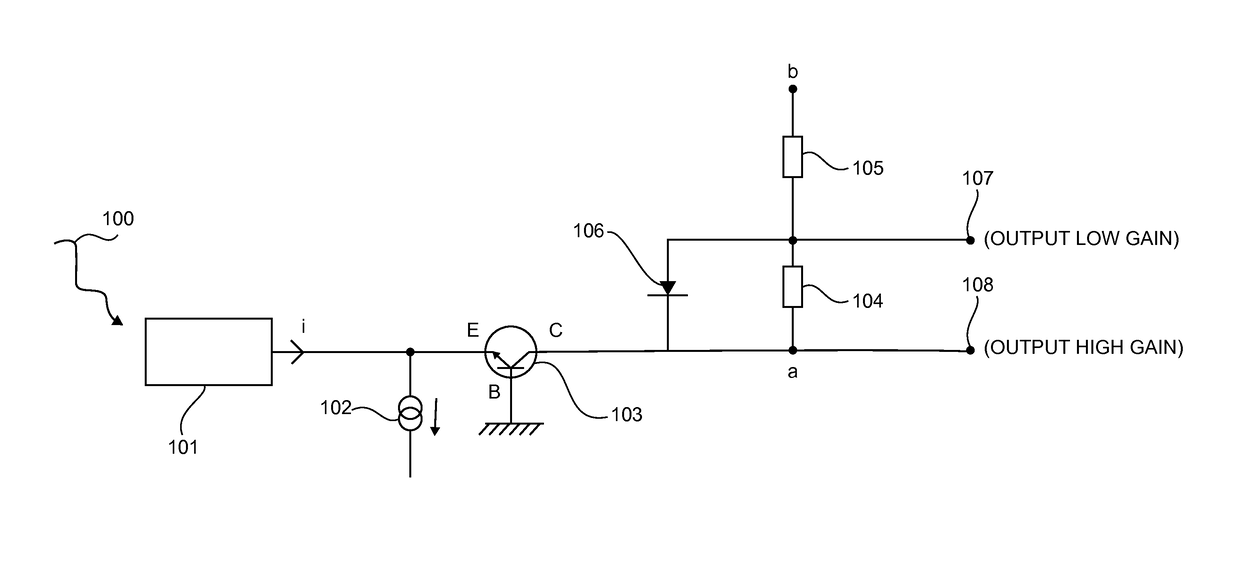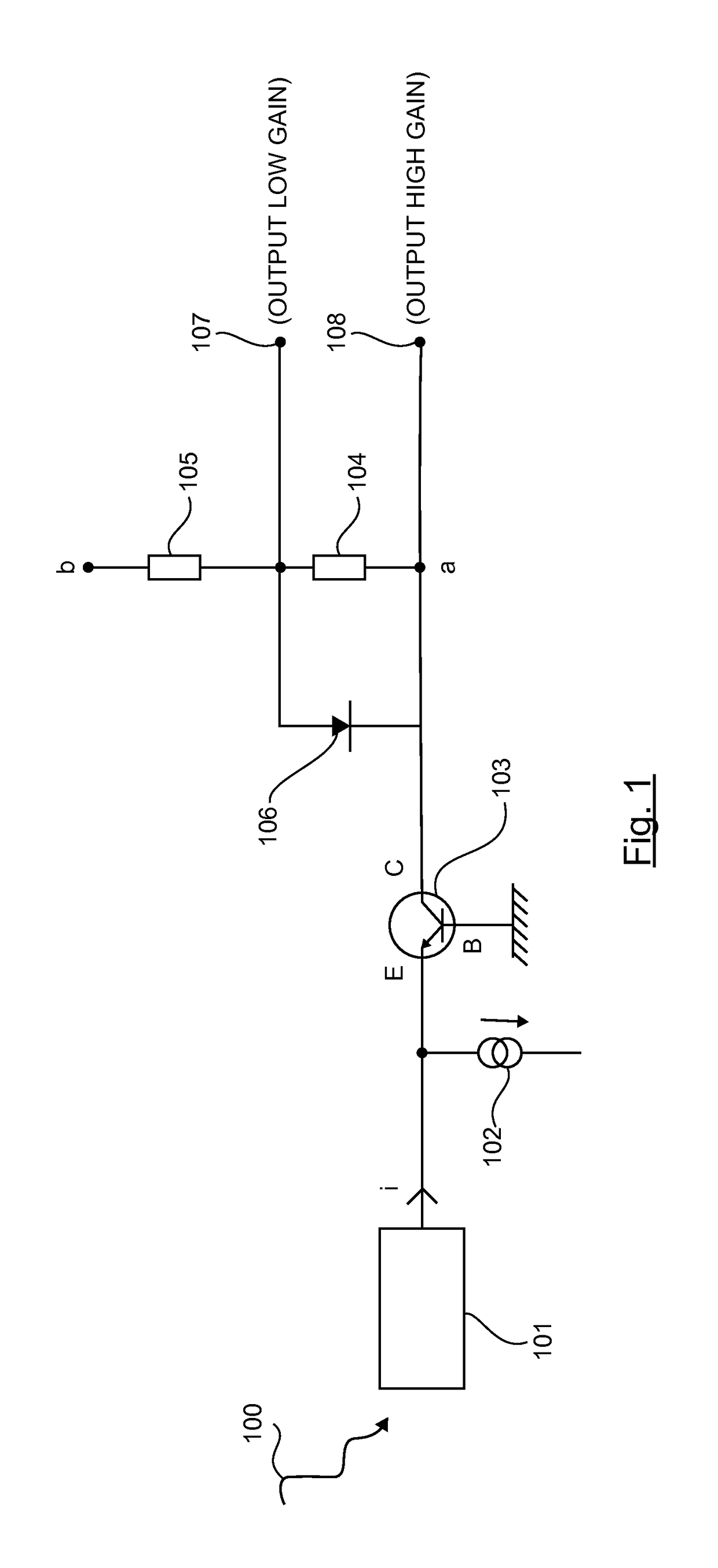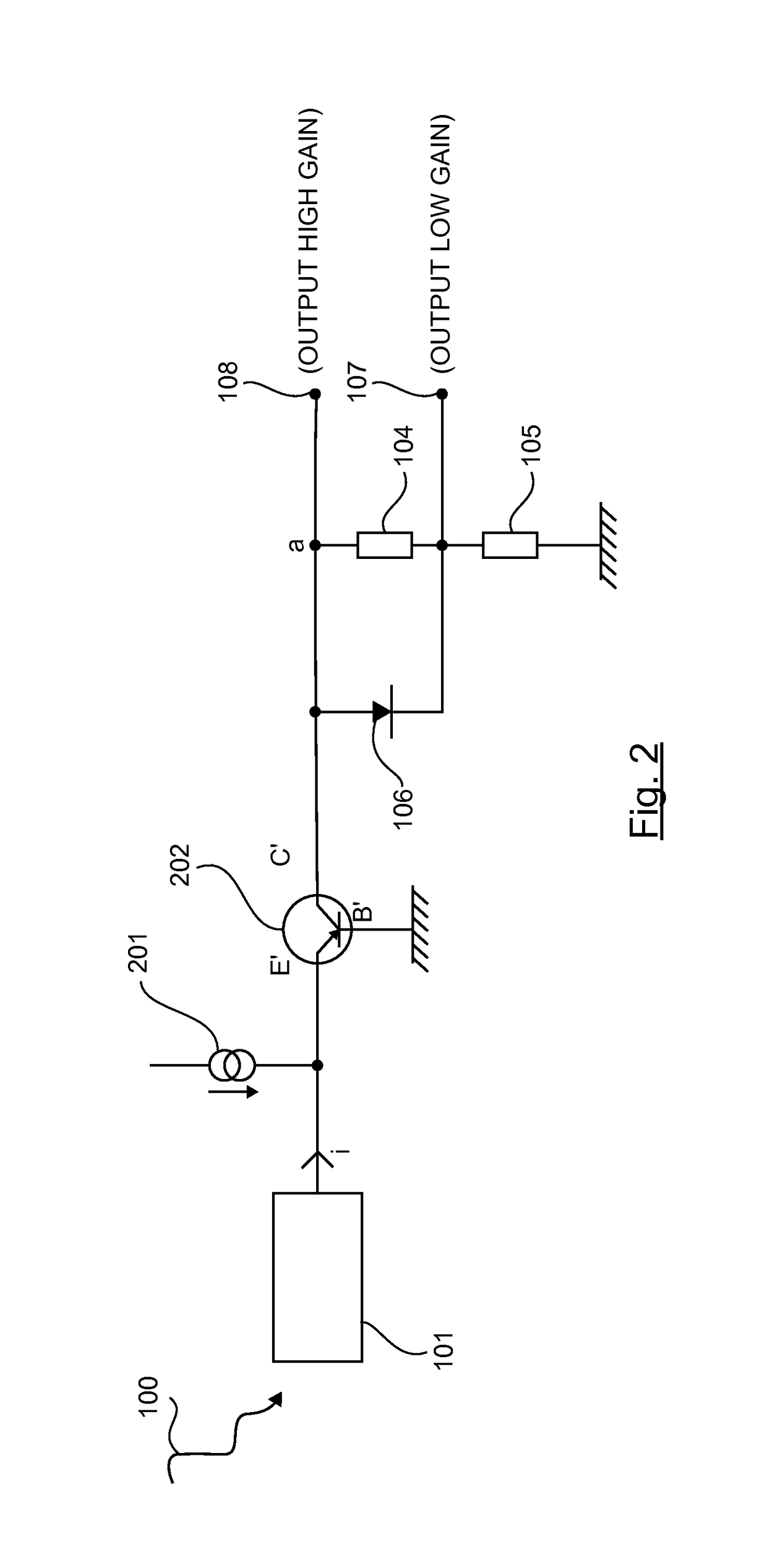Electronic circuit comprising a current conveyor arranged with an anti-saturation device and corresponding device for detecting photons
a current conveyor and photon detection technology, applied in the field of microelectronics and optoelectronics, can solve the problems of obtaining high amplification, giving an imperfect copy of the current coming from the detector, falsifying the measurement of amplitude, etc., to achieve the effect of optimizing temporal precision, minimizing parasitic capacitance, and facilitating the differentiation of signals
- Summary
- Abstract
- Description
- Claims
- Application Information
AI Technical Summary
Benefits of technology
Problems solved by technology
Method used
Image
Examples
first embodiment
[0039]FIG. 1 presents an electronic circuit according to the invention, in which the current conveyor comprises an NPN type bipolar transistor.
[0040]When a photon is received 100 by a photomultiplier device photomultiplier 101, the current i induced by such a device is generally not intense enough to be capable of being measured by classic measurement devices. The circuit of FIG. 1 amplifies the received current while at the same time being capable of dealing with situations where a major flux of photons is received by the photomultiplier device 101.
[0041]Such a circuit has an NPN bipolar transistor 103 (i.e a current conveyor) mounted so that the base B is connected to a DC voltage source (“common base” mounting) , the collector C is connected to an active load possessing the two terminals a and b, and the emitter E is connected to the output of the photomultiplier device 101 and a biasing device 102 (which is a current source).
[0042]According to this embodiment, such an active loa...
second embodiment
[0046]FIG. 2 presents an electronic circuit according to the invention, in which a current conveyor comprises a PNP type bipolar transistor.
[0047]In this embodiment, the current conveyor correspond to a PNP type bipolar transistor mounted so that the base B′ is connected to the ground, the collector C′ is connected to an active load possessing the two terminals a and b, and the emitter E′ is connected to the output of the photomultiplier device 101 and of a biasing device 201.
[0048]In another embodiment, the PNP type bipolar device is replaced by a PMOS transistor.
third embodiment
[0049]FIG. 3 presents an electronic circuit according to the invention, in which a current conveyor is formed by a composite mounting of two “super common base” NPN transistors.
[0050]In this embodiment, the current conveyor corresponds to the combination of two NPN transistors 302, 303 mounted so that the emitter E of the NPN type bipolar transistor 302 is connected to the ground, the collector C of the NPN type bipolar transistor 302 is connected to the base of the NPN type bipolar transistor 303, and to a biasing device 304, and the base B of the NPN type bipolar transistor 302 is connected to the emitter E of the NPN type bipolar transistor 303, the output of the photomultiplier device 101, and to a biasing device 301.
[0051]In another embodiment, such a current conveyor can also be made with combinations of NPN, NMOS, PNP or PMOS transistors.
[0052]In a preferred embodiment of the invention, the resistor 104 has a value of 1000 ohms and the resistor 105 has a value of 100 ohms.
[00...
PUM
 Login to View More
Login to View More Abstract
Description
Claims
Application Information
 Login to View More
Login to View More - R&D
- Intellectual Property
- Life Sciences
- Materials
- Tech Scout
- Unparalleled Data Quality
- Higher Quality Content
- 60% Fewer Hallucinations
Browse by: Latest US Patents, China's latest patents, Technical Efficacy Thesaurus, Application Domain, Technology Topic, Popular Technical Reports.
© 2025 PatSnap. All rights reserved.Legal|Privacy policy|Modern Slavery Act Transparency Statement|Sitemap|About US| Contact US: help@patsnap.com



